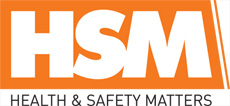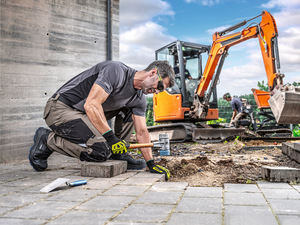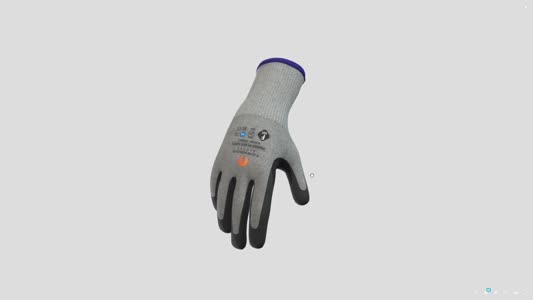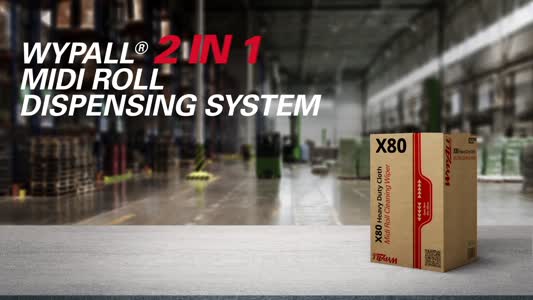
 |
Mark Sennett
Managing Editor |
 |
Kelly Rose
Editor |
Wearability is key
23 September 2025
As well as ensuring eyewear is compliant, it must also be wearable, as if it doesn't stay on, it doesn't protect, says Clair Weston.

ALTHOUGH CERTIFIED safety eyewear is widely available, eye injuries remain worryingly frequent, often because the eyewear is poorly fitting, inappropriate for the task, or not worn consistently. In high-risk environments, even a momentary lapse in protection can lead to serious, long-term consequences.
At uvex, we believe the real solution lies in wearability. Meeting technical standards is vital, but genuine protection comes from eyewear that's designed for real people, performing real work. If it doesn't stay on, it doesn't protect.
What is wearability?
Wearability is a comprehensive approach that ensures safety eyewear is both functional and tailored to the individual. It encompasses four fundamental elements:
- Fit
- Comfort
- Performance
- Style
These components must align to ensure that eyewear is consistently worn throughout the workday, even in the most demanding environments.
Fit: One size doesn't fit all
Safety eyewear isn't universally fitting. Proper fit is essential not only for protection but also to avoid pressure points, slippage, and distraction. The updated EN ISO 16321 standard emphasises the importance of inclusivity in design. By requiring testing across a broader range of head forms, that represent 95% of the global population, it acknowledges the real diversity of today's workforce. This shift marks an important step toward greater protection for all.
Therefore, it's important to look for suppliers that offer extensive product ranges with adjustable features to accommodate different facial shapes, head sizes, and the presence of other PPE such as helmets or hearing protection. Eyewear that doesn't fit is eyewear that won't be worn.
Comfort: A direct line to compliance
Comfort directly influences compliance. Eyewear that pinches, slips, fogs, or digs into the skin is likely to end up unused or pushed up onto the head, leaving the eyes unprotected. Products that are lightweight, breathable, pressure-free, and non-slip (while taking into account heat, sweat, and frequent movement) can significantly enhance comfort. The more natural it feels to wear, the more likely it is to be worn consistently, reducing the likelihood of injury.
Performance: Technology you can rely on
High-performance safety eyewear must perform under pressure. Advanced materials and coatings, such as hydrophilic anti-fog treatments, maintain visual clarity even during rapid temperature changes, exertion, or exposure to steam and dust. Look for manufacturers that oversee the entire production process from raw materials to finished product, ensuring consistency and accountability at every stage.
Style: Safety that looks good
While often underestimated, style plays a surprisingly influential role in encouraging compliance. People naturally want to look and feel good, even at work, and employees are more likely to wear eyewear that appears sleek, modern and professional. When safety eyewear is designed with aesthetics in mind, workers are more inclined to keep it where it belongs: on their face and in front of their eyes.
Prescription safety eyewear: Tailored vision, tailored protection
Employees who require prescription lenses must be able to see clearly and safely at all times. Prescription safety eyewear, offered in a variety of frame styles and fitted to individual prescriptions, ensures no compromises are made and that all employees enjoy the same level of protection.
Innovative features enhancing wearability
- Duo component injection moulding technology: Combines soft and rigid materials for enhanced comfort at pressure points like the nose, temples, and brow.
- High-quality lens coatings: Anti-fog, anti-scratch, and anti-reflective coatings support clearer vision and reduce eye strain.
- Compatibility: Designs that accommodate other PPE or prescription spectacle wearers without adding pressure or causing discomfort.
- Lens filter technology: Lens shades in safety eyewear serve a dual purpose: they reduce glare and reflections to enhance visual clarity and comfort, while also incorporating advanced filter technologies such as UV400 which protects against harmful ultraviolet radiation, and blue light blocking technology from both natural and artificial sources up to 450nm. This supports the eyes and surrounding skin from long-term damage. These features help prevent eye strain and fatigue, support sustained comfort and focus, and contribute to the long-term health and well-being of the wearer.
The role of health and safety professionals
Health and safety professionals play a vital role in identifying workplace hazards and selecting personal protective equipment (PPE) that meets both regulatory standards and employee needs. Involving wearers, in product trial feedback processes ensures that comfort, fit and functionality are properly addressed. This significantly boosts user acceptance and increases the likelihood that PPE will be worn consistently. By prioritising wearability, organisations can shift compliance from a tick-box exercise to an ingrained workplace habit.
Procurement: Balancing cost and long-term value
Procurement teams must balance short-term costs with long-term safety performance. High-quality safety eyewear pays dividends through:
- Reduced replacements: Durable eyewear reduces frequency of issue and lowers total cost.
- Minimised waste: Fewer broken or discarded items support sustainability goals.
- Improved productivity: Comfortable eyewear helps workers stay focused and protected without distraction.
Industry-specific considerations
While safety eyewear must meet overarching standards such as EN ISO 16321, the specific demands placed on eye protection vary greatly between sectors. Below are some tailored considerations to help health and safety professionals select the right protection for different working environments. Prioritising wearability within each use case ensures higher compliance and safer outcomes.
What to look out for in safety eyewear wearability by industry sector
Construction and trades
- Secure, stable fit to prevent slipping
- High impact resistance against debris and projectiles.
- Effective seal to guard against dust and particles.
- Anti-fog coatings for clear vision in varied conditions.
- UV400 protection from harmful UV rays.
- Lightweight yet durable frames for extended wear.
- Tinted lenses to reduce glare and enhance visibility.
- Compatibility with other PPE including helmets and ear defenders.
Emergency and public services
- High optical clarity for varying environments.
- Comfortable, pressure-free fit for extended wear.
- Advanced anti-fog technology for use with face masks.
- Chemical-resistant materials for healthcare and hazardous response.
- Easy-to-clean surfaces for hygiene protocols.
- PE compatibility with helmets, respirators, and communication devices.
Energy and utilities
- UV400 protection shields eyes from UV rays when outdoors
- Sealed or wraparound frames block wind, dust, and liquid splashes.
- Anti-static and anti-fog coatings maintain clear vision in harsh conditions.
- Lightweight design reduces fatigue during extended wear.
Transport and infrastructure
- Impact and scratch-resistant lenses protect against debris.
- Slim frames fit with helmets and headsets.
- Anti-fog coatings ensure clear vision; amber lenses are ideal for low-light conditions.
- UV400 lenses shield against UV exposure on rail, road, and maritime sites.
- Durable construction for rugged use.
Manufacturing
- Well-fitted, clear, distortion-free lenses for precision tasks.
- Anti-fog and anti-scratch coatings for reliable visibility in humid environments.
- Soft sealing materials for comfort during extended wear.
- Chemical splash resistance for sectors like pharmaceuticals and food processing.
- Easy-to-clean materials for sterile environments.
- Robust construction for industrial settings and frequent cleaning.
Storage and distribution
- Lightweight frames for warehouse and logistics workers.
- UV400 lenses for sun protection during outdoor tasks.
- Anti-fog lenses for clear vision when transitioning between temperature zones.
- Shades to filter brightness and glare, reducing eye strain.
- Wide peripheral vision for safe navigation in busy areas.
- Ergonomic nose bridges and side arms for all-day comfort.
- Durable materials to withstand frequent handling and varied conditions.
Technology and communication
- Low-profile eyewear designed for confined spaces and use with communication headsets.
- UV400 protection for outdoor technicians.
- Flexible fit for frequent PPE adjustments.
- Anti-glare and fog-resistant coatings for clear vision.
- Lightweight, durable materials for long shifts and high mobility.
Conclusion
Wearability is the cornerstone of effective safety eyewear. It bridges the gap between regulation and real-world protection. By prioritising fit, comfort, performance, and style, uvex ensures that its products are not only worn but kept on, providing continuous, reliable protection.
Clair Weston is head of marketing at uvex. For more information, visit: uvex-safety.co.uk/wearability
























